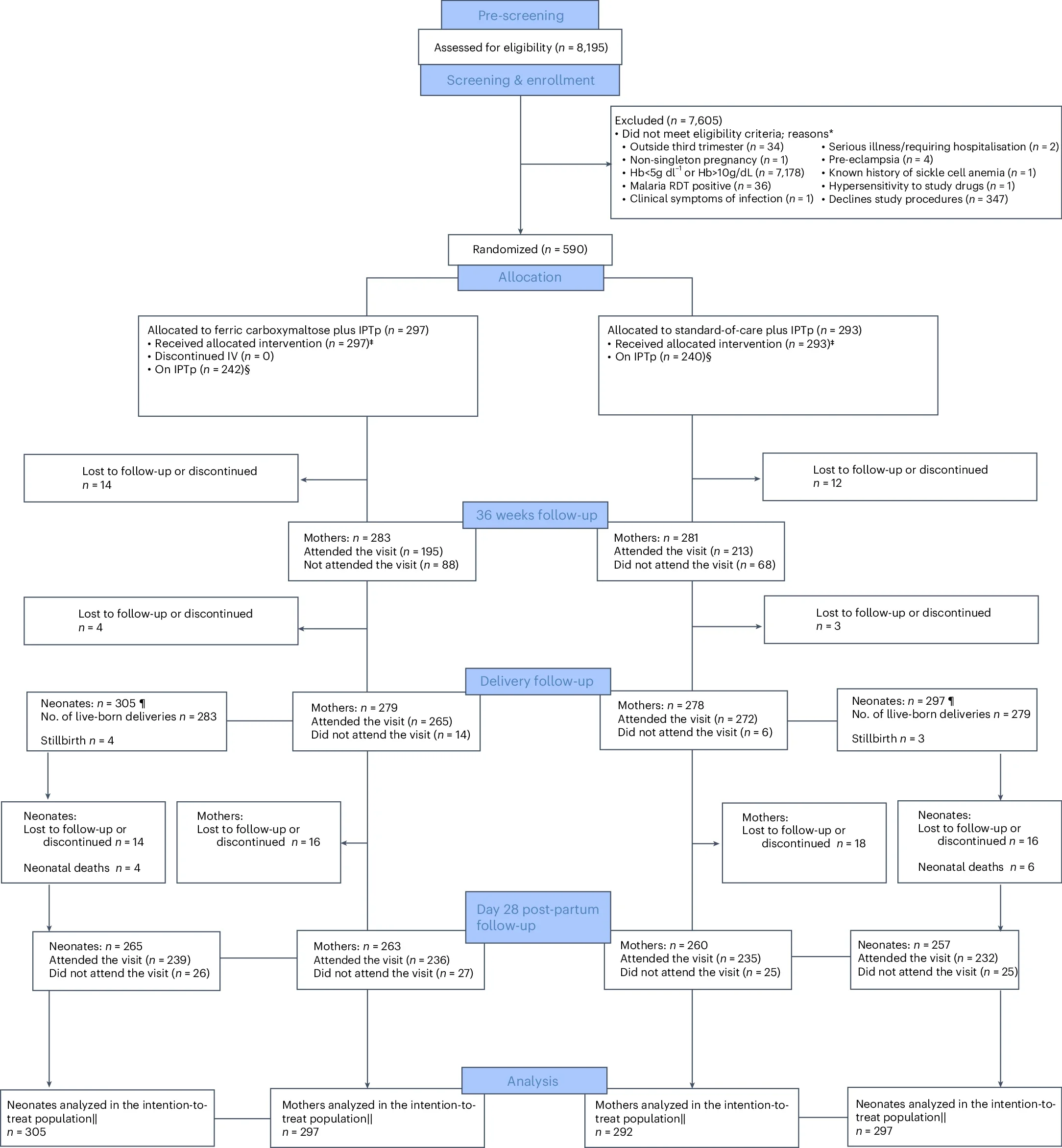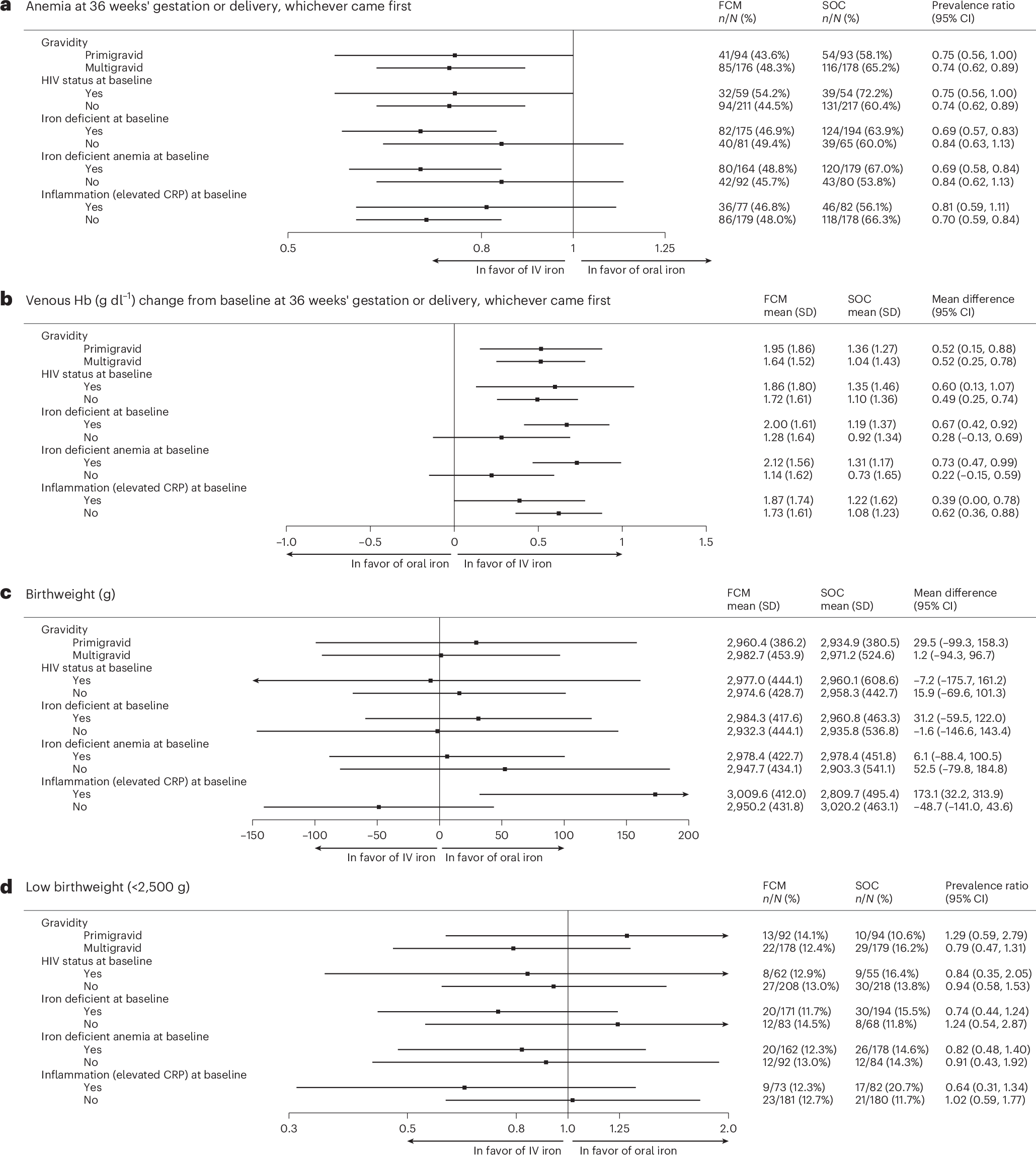Anemia during pregnancy is a global health challenge, affecting 37% of expectant mothers worldwide. In sub-Saharan Africa, the burden is even higher, with nearly half of pregnant women facing this condition.
The consequences are severe, ranging from increased maternal mortality to adverse neonatal outcomes such as low birth weight and preterm delivery. While oral iron supplements have long been the standard treatment, new research suggests that intravenous iron infusions could offer a more effective solution in late pregnancy.
Iron deficiency is the leading cause of anemia during pregnancy. Traditionally, the World Health Organization (WHO) has recommended daily oral iron supplements to combat this deficiency. However, adherence to this regimen remains low, particularly in low-resource settings. For example, in sub-Saharan Africa, only 29% of pregnant women complete the prescribed course of oral iron.
The limited efficacy of oral iron becomes even more apparent in late pregnancy. As labor approaches, there is insufficient time for oral supplements to restore hemoglobin levels adequately. This delay can leave expectant mothers vulnerable to complications such as chronic fatigue and postpartum hemorrhage, which contribute to maternal morbidity and mortality.

This is where intravenous iron formulations, such as ferric carboxymaltose (FCM), come into play. FCM allows for a rapid administration of up to 1,000 mg of iron in a single infusion, offering a faster and potentially more reliable method of combating anemia.
To explore the efficacy of FCM, researchers from WEHI (Australia) and the Training Research Unit of Excellence in Malawi conducted one of the largest iron trials to date. This study, involving 590 pregnant women in southern Malawi, aimed to determine whether FCM could outperform oral iron in treating moderate to severe anemia during the third trimester.
Participants were randomly assigned to receive either a single FCM infusion or a standard regimen of oral iron tablets. The trial followed the women through delivery and up to four weeks postpartum.
The results were striking: 46.7% of women in the FCM group were still anemic at the time of delivery, compared to 62.7% in the oral iron group. This significant reduction in anemia prevalence underscores the potential of FCM to improve maternal health outcomes.
The study also highlighted the challenges of identifying and treating anemia in low-resource settings. In Malawi, many women do not access antenatal care until late in their pregnancies.
Related Stories
Sophisticated laboratory tests to diagnose anemia and its underlying causes are often unavailable, making it difficult to provide timely and effective treatment. The success of FCM in this context demonstrates its potential as a practical solution for similar settings worldwide.
The benefits of FCM extended beyond the reduction of anemia. Women who received the infusion maintained higher iron stores postpartum, reducing the risk of chronic fatigue and postpartum hemorrhage. These findings are particularly relevant for low-income regions like Malawi, where anemia often coexists with other health challenges such as malaria and HIV.
“This sustained impact on anemia is an unprecedented finding that really crystallizes the case for using infusions in late pregnancy,” said Professor Sant-Rayn Pasricha, one of the study’s lead authors. He emphasized the broader implications of these results, suggesting that intravenous iron could be safely administered even in basic health settings.
The implications for newborns are equally significant. Maternal anemia has been linked to complications such as impaired brain development and low birth weight.
While the study found no significant difference in birth weight between the FCM and oral iron groups, the overall improvement in maternal health could have long-term benefits for neonatal outcomes. Adequate maternal iron levels during pregnancy are crucial for supporting the baby’s brain development, red blood cell production, and overall growth.

In addition, the findings highlight the importance of addressing anemia as a preventive measure. By ensuring that expectant mothers have adequate iron levels before delivery, healthcare providers can reduce the risk of complications that arise during labor and the postpartum period. This proactive approach could significantly improve survival rates and quality of life for both mothers and their babies.
Despite its promise, intravenous iron is not yet a standard treatment for anemia in pregnancy. The WHO continues to recommend oral iron as the primary intervention. However, the findings from this study could pave the way for a shift in global guidelines. Researchers plan to share their data with the WHO, advocating for the inclusion of intravenous iron as a recommended treatment option, particularly in cases where oral iron proves inadequate.
The study also highlights the feasibility of implementing FCM in resource-limited settings. In Malawi, government health workers successfully administered the infusions under supervision, demonstrating that this approach can be scaled even in regions with limited healthcare infrastructure.
“If intravenous iron can be safely delivered in basic health centers in remote Malawi, there’s really no health setting where IV iron couldn’t be effectively and safely given,” said Professor Pasricha.
Furthermore, the economic implications of intravenous iron deserve attention. While the upfront cost of FCM may be higher than that of oral supplements, the long-term benefits—including reduced maternal mortality, fewer complications, and improved neonatal health—could make it a cost-effective solution. Policymakers and healthcare providers must weigh these factors when considering updates to maternal care guidelines.

The prevalence of anemia in pregnancy underscores the urgent need for effective interventions. Globally, anemia affects approximately 32 million pregnant women at any given time, with severe cases leading to life-threatening complications. While oral iron remains a viable option for many, the evidence supporting FCM offers hope for those in the most critical need.
As maternal health remains a priority in global healthcare, the integration of intravenous iron into antenatal care could mark a significant advancement. This innovation has the potential to save lives, improve birth outcomes, and enhance the overall well-being of mothers and their children. Researchers emphasize that addressing maternal anemia is not only a health issue but also a matter of social and economic development, as healthier mothers contribute to healthier communities.
The study’s publication in Nature Medicine underscores its scientific significance. It represents a pivotal moment in the fight against maternal anemia, offering a clear roadmap for improving care. By addressing the limitations of current treatments and embracing new approaches, healthcare providers can ensure that more women receive the care they need when they need it most.
While challenges remain, the findings from this trial provide a compelling case for change. With continued research and collaboration, intravenous iron could soon become a cornerstone of maternal health strategies worldwide.
Healthcare systems must prioritize the training and resources needed to implement this treatment, ensuring that even the most vulnerable populations have access to its benefits.
Note: Materials provided above by The Brighter Side of News. Content may be edited for style and length.
Like these kind of feel good stories? Get The Brighter Side of News’ newsletter.
The post Iron infusions are transforming pregnancy care appeared first on The Brighter Side of News.